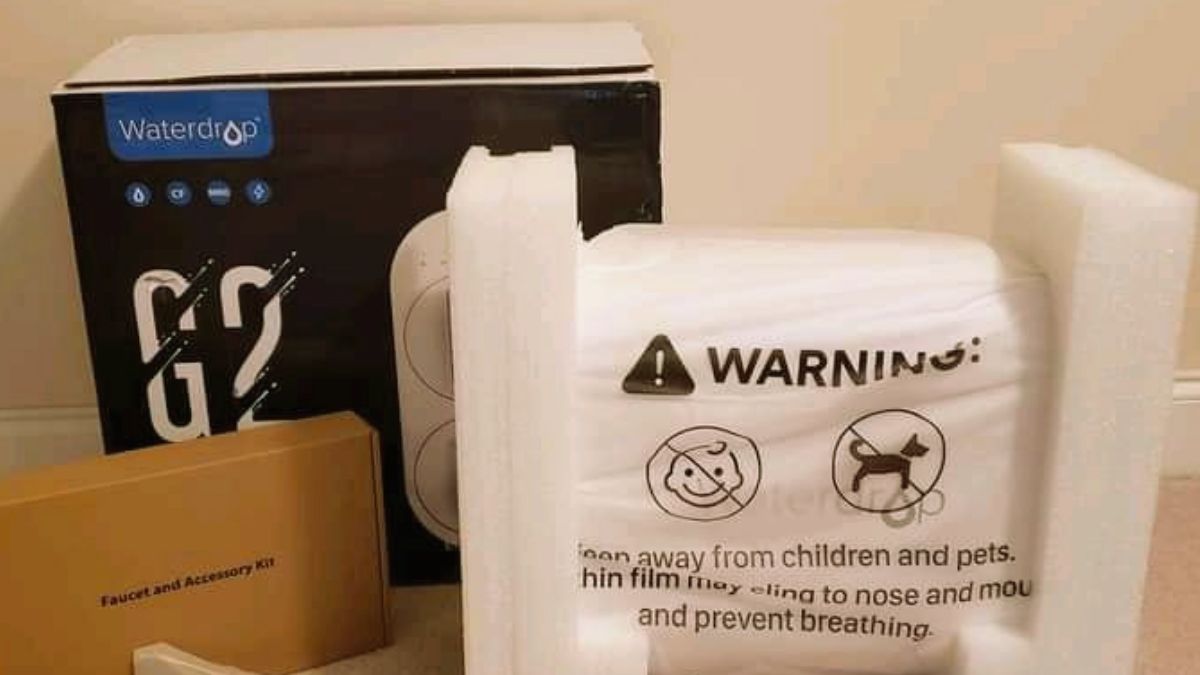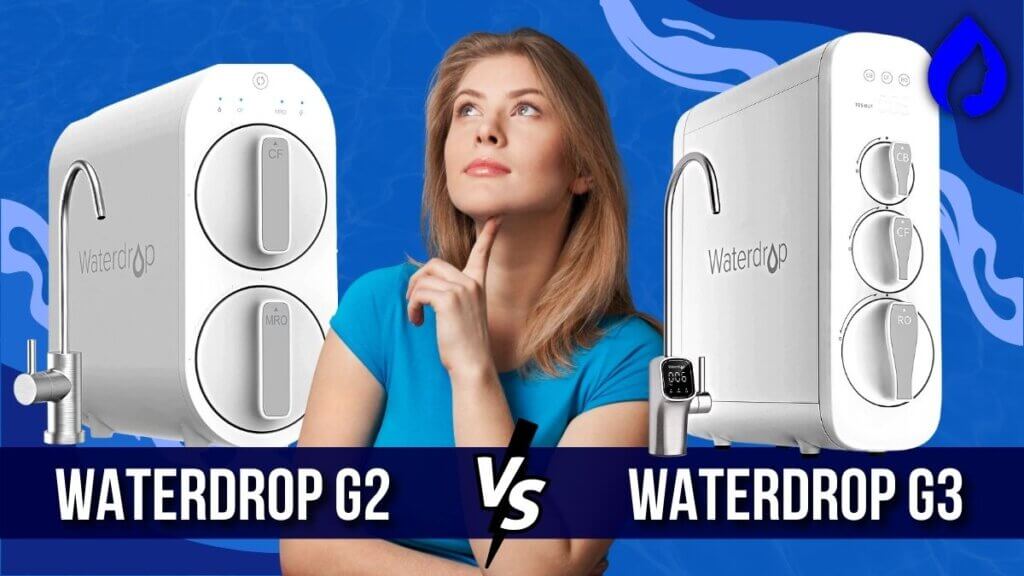
Waterdrop is undoubtedly the most popular RO brand, and in today’s guide, we will put Waterdrop G2 vs G3 to the ultimate test.
So if you want an advanced comparison with accurate details without fluff, this guide is for you!
Here we go:
Waterdrop G2 vs G3: Here’s A Quick Cheat-Sheet!
Pros
- Tankless construction
- It comes with two replacement filters
- A maximum water flow rate of 400 GPD.
- A CF filter with a sediment PP membrane and an activated carbon block.
Cons
- There is no smart faucet with LED or integrated TDS reading.
- There is no built-in water leak detection.
- 5 filtering stages, whereas G3 has 7.
This G2 Reverse Osmosis Water Filtration System has a high flow rate of up to 400 GPD. In 12 seconds, you can have a cup of filtered water to manage all your daily water needs.
Pros
- Super simple to install, with excellent directions.
- The absence of a storage tank means that there is no secondary contamination.
- Occupies less space.
- Sleek design, simple upkeep.
Cons
- Pricier than its competitors.
- A Refrigerator Connection Will Deliver Less Water Pressure Than You Are Accustomed To.
- Slow faucet water flow.
Waterdrop G3 employs three long-lasting composite filters for seven stages of thorough filtration.
Here's How We Test Products At Aquaprofessor
Waterdrop G2 vs G3 Comparison: Main Differences
| Waterdrop G2 | Waterdrop G3 | |
| Easy to install | 3/5 | 4/5 |
| Water flow rate | 5/5 (Same 0.28 gallons per minute) | 5/5 |
| Maintenance | 3/5 | 5/5 |
| Customer Service | 4/5 | 4/5 |
| Filtration Stages | 5 Filtration stages and 2 Composite filters | 7 stages of filtration and 3 composite filters |
| Output | 600 GPD/0.42 GPM | 400 GPD/0.28 GPM |
| Water wastage ratio | 1 Gal : 3 Gal Filtered | 1 Gal : 1 Gal Filtered |
| Price | Check Price | Check price |
Also Read: Frizzlife vs Waterdrop Under Sink Filters
Detailed Waterdrop G2 Review
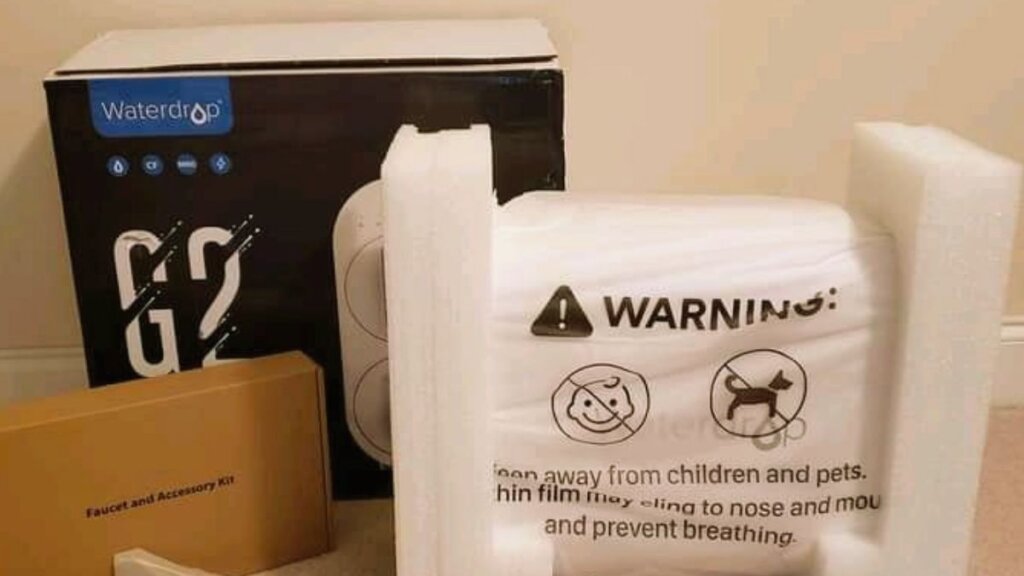
Waterdrop boasts that its filter can eliminate over 1000 hazardous pollutants from your drinking water. It can remove TDS (Total Dissolved Solids) from your drinking water by more than 90%.
(Want to know the truth in this? Continue reading…)
Waterdrop G2 Reverse Osmosis System Uses a Composite RO Filter
Here’s the truth:
Composite filters are the most significant type of water filter. Whether you care about water quality or water drain ratio, everything depends on the quality of the composite filter.
To tell you about it, the composite filter is that student inside the examination hall who has bothered to prepare. All others planned to copy from others!
(We all wanted that one studious student inside the exam hall!)
Anyway, back to our comparison guide:
WATERDROP WD-G2 employs two composite filters!
A carbon Block Filter that filters out chloramine and improves the flavor of water, and an MRO filter that can filter close to 8400 liters of water and costs barely 100 dollars.
Also Read: 5 Ways To Add More Minerals To Your RO Water
Flow Rate of Waterdrop G2

There’s not even a fight here; Waterdrop G2 clearly wins in water flow rate, capacity and speed.
Don’t believe me? Here are the numbers:
That’s for water filtration “capacity” and “speed.” In terms of performance, G2 beats G3 by 64%.
You read that right. There’s not even a contest here!
Also Read: 5 Best Waterdrop RO Systems
✅ Indicator of Smart Filter Life
These smart features can really come in handy. You get alerts when you have to replace composite filters and get confirmation when they are functioning properly.
Here are three smart filter lights and what they do:
⚖ G2 RO Systems Have a Low Drain Ratio
Know for sure that tankless ROs typically have a low drain water ratio compared to tank-type systems.
Having cleared this misconception, here are the valuable stats we collected:
Low Wastage!
WD-G2 offers a 1:3 drain water ratio (though it claims to have 1:1), meaning you have to pour in 2 liters of unfiltered water to get 1 liter of fresh water.
Here's the Waterdrop G2 Manual PDF link for it's easy installation
The Detailed Waterdrop G3P800 Review
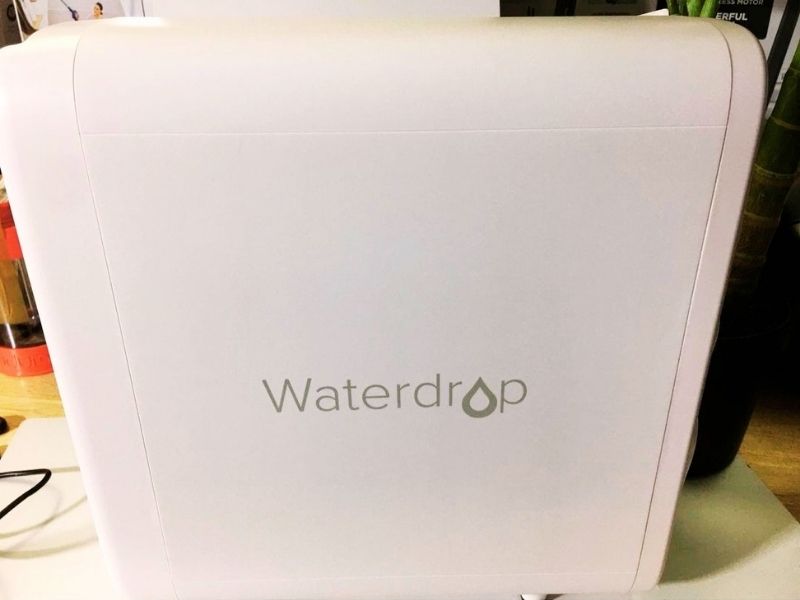
Waterdrop G3 Composite Filters and Their Lifespan
G3 Waterdrop RO employs three filters in total: CF filter, RO membrane filter, and Post-Activated Carbon Filter.
(I’ll not bore you with useless data on pore sizes and such other things. Neither it interests me nor does it matter to you in your purchase decision).
Your local water quality determines the life of your filter. Worser your city water, the shorter the lifespan of your RO system.
(Ask any city woman with poor water quality, and she will narrate all her misery with this!).
Changing such filters regularly appears to be a Herculean task because no one has time to keep track of water-filter usage in our hectic lives.
Maybe that’s why Waterdrop has incorporated a G3 smart faucet. The smart faucet is outfitted with indicator LEDs.
It functions as a filter life indicator, displaying changing-colored lights based on the filter’s lifespan.
The indicator is dependent on the filter’s filtering capacity or the filter’s usage time (whichever comes first).
Also Read: Waterdrop G3 vs D6
WaterDrop G3 Drain Ratio Is Low
You might wonder what the wastewater ratio of the Waterdrop G3 tankless reverse osmosis water filter is.
After all, many RO systems are notorious for having a high wastewater ratio. But not the Waterdrop G3.
The Waterdrop G3 features a fantastic 1:1 drain ratio (better than G2). That means it is a 50% efficient RO water filter.
This means that if you pour in 1 liter of unfiltered “bad” water, you get 1 liter of tasty and purified water.
Filtration Capacity Of Waterdrop G3 Reverse Osmosis Systems
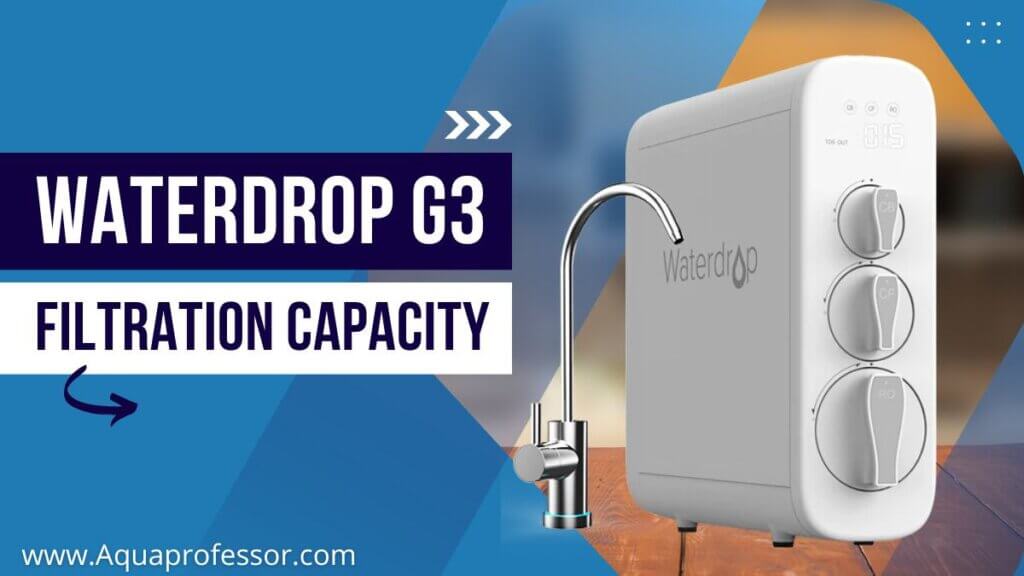
People generally have two questions regarding the “capacity” of RO systems:
Waterdrop G3 works exceptionally well in low water pressure, giving you 1 cup of filtered water every 12 seconds.
With a water flow rate of 0.28 gallons per minute, Wd-G3 is one of the quickest water filters in the business.
To answer the second question,
Waterdrop G3 offers up to 1,514 liters of filtered water daily. Traditional RO water filters can only provide 50 gallons (189 liters) of water each day.
This proves that G3 is eight times more powerful than any other average RO filter.
To put it into perspective, the average American family consumes 5-10 liters of drinking water per day. So it goes without saying that the waterdrop G3 is powerful enough to provide enough drinking and cooking water for even the largest family you can imagine.
Waterdrop G3 Is Easy To Maintain.
The Waterdrop G3 system is intended for installation by anyone with basic DIY skills.
(No skilled plumber needed).
Indeed, of all the systems we’ve examined, the Waterdrop G3 system is the EASIEST to set up and maintain!
Here’s the Waterdrop G3 manual PDF link to help you get started with its installation.
Here’s my caveat, though:
You have to drill a hole in the sink for the faucet unless a hole already exists for the sink sprayer.
Also Read: The Easy Brita Pitcher Cleaning Guide In 2024
✨ Waterdrop G2 vs Waterdrop G3 Review: What Do Users Say?
Let us look into what the customers are saying!
User Reviews of WD G2
A user of WD G2 stated this (edited),
“1:1 drain ratio (as claimed by the company) is misleading as I found it to be 1:3. The customer support informed me that I could get 1:1 filtered water versus discharge water ratio if I turned on the faucet for 20 minutes:
According to another user of Waterdrop G2 (edited),
“I and my wife have been using Brita filter for years but decided to go for Waterdrop G2 to get the pros of a tankless system. It does need more space to fit so DYOR (Do Your Own Research) before buying any tankless RO”.
User Reviews of WD G3
A user on the largest ecom site reviewed (edited):
“I love the tankless design (allowing the unit to pump water directly), tasty water and their efficient customer service. But the RO is big and heavy, and you have to double-check for the power outlet.”
Another user, whose experience was not that good, stated (edited):
“We replaced our local water filter (with G2) but our meter displayed 128PPM for its filtered water which is way more than what the unit displayed (27 PPM). Such a bad thing has never happened with any RO we have purchased so far”.

Waterdrop W3 Discount
Get 10% off
Conclusion

The Waterdrop WD-G2P600-W and WD-G3-W have the same design and can remove 99.9% of pollutants from water.
The G3 features a more thorough 7-stage filtering process that removes more pollutants. As a result, the water coming from this system is better purified.
Both systems feature a tankless design, so maintaining them is simple and affordable.
To summarize, if you’re on a limited budget, the G2 will be enough. If smart features and thorough filtration is what you’re looking for, though, the G3 is the way to go.
Waterdrop G2 vs Waterdrop G3: The Final Verdict
Our winner is the Waterdrop’s G2, a budget-friendly device with excellent features necessary for the user!
However, if you’re impressed with the extra features of G3, you can try it!
Frequently Asked Questions
What is the lifespan of waterdrop filters?
Waterdrop filters have a 9-month lifespan, which can vary based on the heavy metal and/or chemical contamination in your water supply.
How often should I change my Waterdrop filter?
You should replace your waterdrop filter after 200 gallons of filtration. It roughly translates to every three months.
Are waterdrop filters capable of removing lead?
Waterdrop filters are NSF-certified to eliminate high levels of iron and lead in water.
How should the water filter pitcher be cleaned?
Here are the steps you need to follow:
1. Take off the lid and wash it.
2. Remove and set away from the filter.
3. Take out and clean the reservoir.
4. Rinse and dry the pitcher upside down.
5. Set up the new filter.
Is Waterdrop a firm based in the United States?
The company told me via email: “Our Waterdrop Filters are designed in the United States and manufactured in China.”
Adarsh is a Health & Nutrition Sciences graduate with expertise in environmental health. He is associated with ventures like Glacier Fresh Filter and Simpure Filter Systems. Through Aqua Professor, he intends to provide helpful information to every home to help them make smarter decisions.

